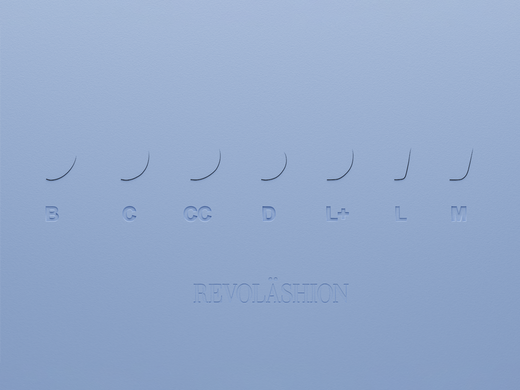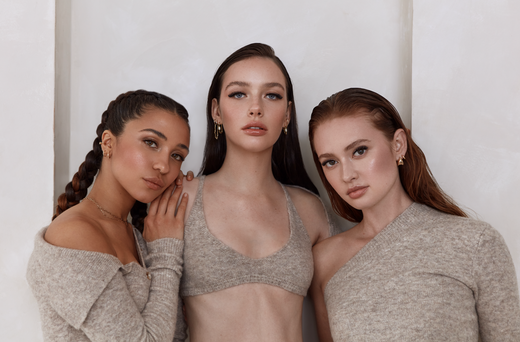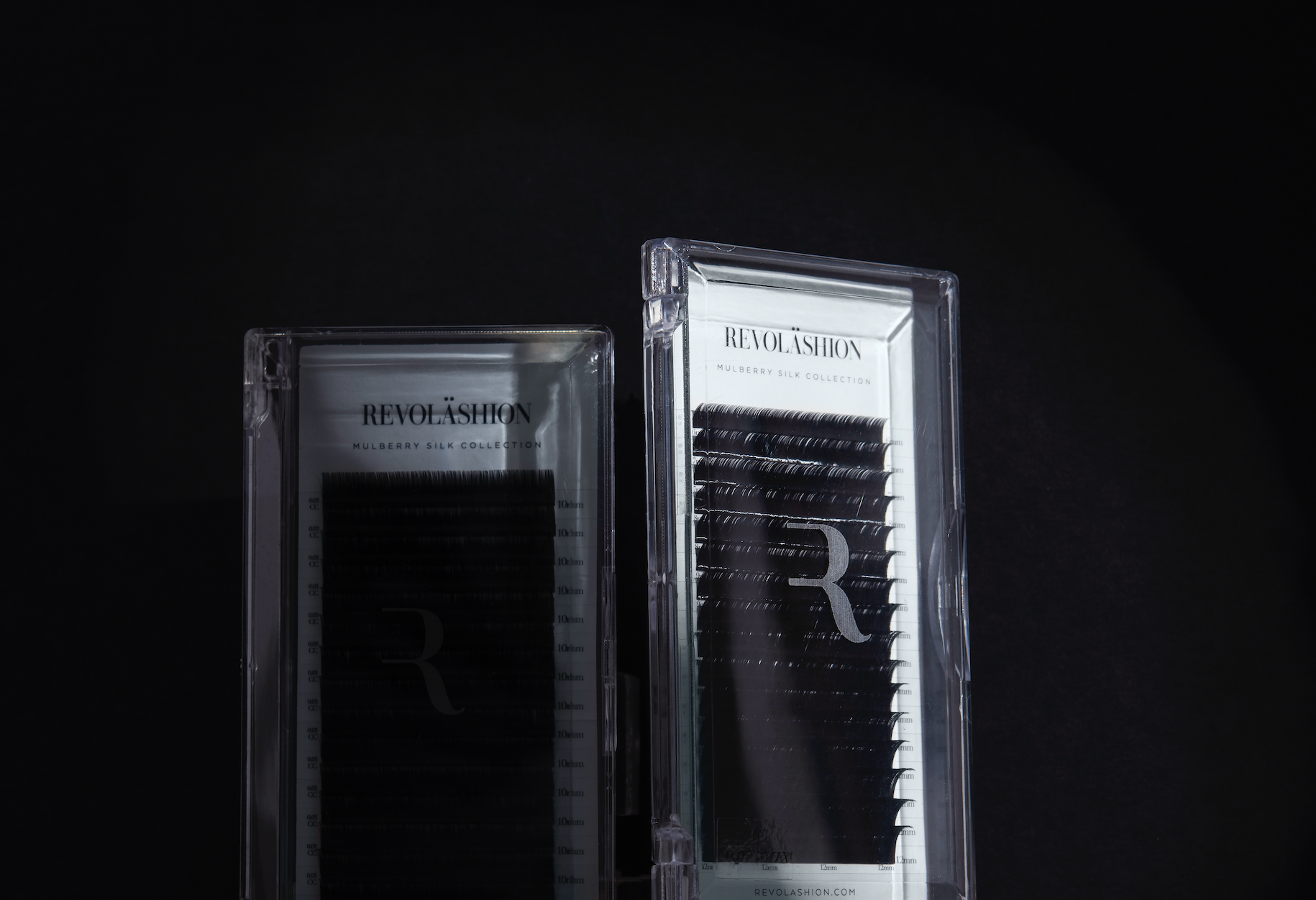
A Comprehensive Guide To Types of Lash Curls
In this comprehensive guide, we’ll dive into one of the crucial parameters of eyelash extensions — the lash curls.
The success of eyelash extensions lies not only in the skilled hands of a lash artist but also in the skillful selection of the materials they work with to create their art. We will be breaking them down in detail, one by one, while providing in-depth insights into choosing curls that harmonize with your client’s unique features.
In the realm of modern beauty techniques, eyelash extensions have emerged as a very powerful tool — allowing us, as artists, to help our clients achieve an elevated look that accentuates their natural beauty while simultaneously reducing the time spent on the morning routine. For us lash lovers, lash curlers and mascara have quickly become a thing of the past, and we haven’t looked back since.
As you likely have already learned, lash extensions are not a “one-size-fits-all” service, and crafting the perfect lash set isn't a universal approach. And so, the more you understand the intricacies behind lash artistry, the better suited you will be to customize on a client-by-client basis and create distinctive and eye-catching sets that separate you from other competitors in your market.
Ok curlfriend, let’s dive into it!
Learning your lashing ABC’s
Let’s start from the beginning — aka the lashing alphabet. Lash extensions are made out of synthetic fibers which can have various types of bends, more commonly referred to in the lash world as ‘curls’. These forms, resembling rounded shapes, are achieved by heating the fibers to specific temperatures, and thus, the artificial fibers take on a specific curl. While there are many different curls to choose from, the primary types include: J, B, C, CC, D, L, L+, M. Each type serves a unique purpose, catering to different natural lashes, eye shapes, and client expectations.
Understanding the differences and offsets of lash curls is vital for achieving a visually harmonious result. Practical ways to understand and compare lash extension curls include examining diagrams and comparison charts. So let’s have a look at this chart below:
General differences, comparisons and suitability...
Now that you know your ABC’s — let’s get into the specifics.
In the context of lash extensions, the terms J, B, C, CC, D, L, L+, and M refer to different types of curls and lengths for individual eyelash extensions. These variations are important for achieving different looks and catering to the diverse preferences of clients.
As you probably might have guessed, each type of curl serves a unique purpose in achieving different looks and catering to the diverse preferences of clients. These curls fall into three main categories. Let’s look at the breakdown:
1. Natural Curls:
J Curl:
-
J curls are subtle and natural-looking. They are the most minimal curve you can have when it comes to lash extensions. They provide a slight lift to the lashes without being overly dramatic.
-
This lash curl is ideal for clients who want a more understated and everyday appearance.
-
They are suitable for straight and downward-angled/downturned natural lashes.
-
This curl has lost its popularity as artists mostly work with B curl to achieve similar results.
B Curl:
-
B curls are known for their very slight curvature, which is slightly more curved than J. They provide a natural and subtle lift to the lashes.
-
Typically used for very natural sets, straighter natural lashes, and are also optimal for inner corner work.
-
This curl is also frequently used by artists who offer extensions on bottom lashes.
@leyelika
-
C curls have a more noticeable curve compared to B curls, making C curl sets more expressive. They provide a more lifted and open-eyed effect. C curls are popular for clients who desire a slightly more glamorous look without the extreme drama of other curls we discuss below.
-
This is typically referred to as the most natural curl as it tends to mimic the average curl of the average natural lash.

2. Standard Lash Curls:
-
CC curls are a step up from C curls in terms of curvature. They offer a more pronounced lift, making them suitable for clients who want a bolder and more defined lash line without venturing into the territory of very dramatic curls.
-
This is the most commonly used curl in lash curl as it tends to be the most versatile. This can be closely compared to the curl we wish to achieve when using a lash curler on our natural lashes. Also commonly referred to as the “mascara lifting” look that this curl achieves.
@//oliviacharlottestudio
-
A tight curl that can be described as dramatic, glam, with an eye-enlarging effect. Extends much further upward than the rest, for heightened expressiveness and eye-opening impact.
-
D curl is known for their intense curvature making them suitable for clients who want a bold and noticeable lash extension style, often associated with a more dramatic or doll-like appearance.

@//lashaddict
3. Specialty/Creative Lash Curls:
-
L curls have a flat base and a gradual but extreme upward lift towards the end, creating a unique L shape
-
These lashes are corner-shaped, without any curve to the fiber. This straightening aspect of this curl visually maximizes the gaze while adding a touch of sultriness to the set.
-
They are often used to enhance the outer corners of the eyes, providing a cat-eye effect. L curls are also beneficial for clients with straight natural lashes or those seeking a more exotic look.

@//des.design.studio
-
L+ curls are extensions of the L curl, offering a similar lifting effect but one that is softer due to the curve that is absent in the standard L curl.
-
This curl combines L and CC curls into one. It has a similar base to the L with a more pronounced curve after the corner-shaped bend.
-
They are suitable for clients who desire an extra dramatic cat-eye effect or those with downturned natural lashes.
-
M curls are a combination of L and L+ curls, providing a medium level of curvature.
-
It combines the flat base and lack of curve of the L curl, while avoiding the visual impact that the corner-shaped L carries. The M curl has no sharp bend to it whatsoever — it gradually curves from the straight base into the straight upper portion of the lash.
-
They are versatile and can be used to achieve a range of looks, from natural to slightly dramatic, making them suitable for various client preferences. They also blend quite seamlessly with all other curls.
-
It is known as the universal curl amongst the specialty curl category that is suitable for various eye types.
Pros and Cons of Lash Curls
Understanding the primary pros and cons of different curls is also crucial for both lash artists and their clients:
Pros:
- Excellent for visually correcting the appearance of overhanging or droopy eyelids (M, D, L+, C+).
- Ideal for doll-like effects, for small eyes and maximal eye-opening impact: D, D+, L+ curls.
- Curls for rounding effect: Tighter curls such as (M, CC and D)
Cons:
-
B and C curls: If the application goes against natural features such as down-turned eyes, these curls can further pronounce the downturn, making eyes appear droopy and sad.
-
Creative Curls (L, L+): Require precision due to potential deviations in direction.
-
Extended Leg Plateau in L, L+ : Requires control to prevent detachment; may be less tightly attached if the artist isn’t experienced in specialty curls.
Rules for selecting the right lash curl:
Choosing the right lash curl and length depends on factors such as the client's natural lashes, eye shape, and their desired look. Lash artists often customize extensions by mixing curls and lengths to achieve a personalized and flattering result for each client.
Making the right selection for each individual set involves a delicate dance between the client's preferences and the physical features of their natural lashes. Specific rules can help guide lash artists in this intricate process. Let’s look at some examples:
- For maximum naturalness, opt for the “natural curl” category listed earlier in this blog. For a bold look, choose amongst the tighter curls that follow.
- Combine different curls to create an interesting and multifaceted look.
- Adjust curls based on eye shape, addressing concerns such as hooded lids, wide-set eyes, or drooping corners.
- For a natural but elongated look, choose a mixture B and C lashes to "stretch out" round eyes visually towards the outer corners.
- Address age-related eye features by using opening glance lashes like B and C curls.
- Adapt to inner and outer eye corner placement by transitioning from a strong curve to less curved lashes and vs. to either raise or lower the corners visually.
- For wide-set eyes, bring them closer visually by using more curved lashes in the middle and less curved ones closer to the outer corners.
- Correct downturned corners making the curve softer in the inner corners and the center and tighter towards the outer corners. You can combine B, C, CC and D for maximum lifting impact.
Maintaining the uniform lash curl shape of the lash fibers:
High quality eyelash extensions are crafted from high-grade Korean Polybutylene Terephthalate, commonly referred to as PBT. This synthetic material possesses a timeless quality as the material itself does not have an expiration date. However, despite the longevity of the material, the curls of the lashes may gradually lose their defined shape over long periods of time. To safeguard against the relaxation of curls, it is advisable to store the extensions in a cool, dry environment, ensuring they are shielded from direct heat, sunlight and excessive humidity. This precautionary measure contributes to preserving the enduring allure of the eyelash extensions.
Conclusion
As we hope you’ve discovered after reading this breakdown, the art of eyelash extensions goes beyond mere application; it involves a nuanced understanding of the curls and the unique features of each client. By diving into the diversity of lash curls that the lash world has to offer, both the artist and the clients can embark on a personalized journey of beauty enhancement — whether it’s a subtle emphasis of natural beauty or a bold statement of glamor.
As you learn to navigate lash artistry, always remember that the world of eyelash extensions is ever-evolving, and thus, continuing to educate yourself and stay on top of the trends and most up-to-date practices is essential in order to best serve your clientele.
Need some more lash tips? Check out which eye pads would be beneficial for you as a lash your heart away by checking out our Undereye Pads Versus Lash Tape blog. Whether you’re just starting out or just want to change things up for your clients this


